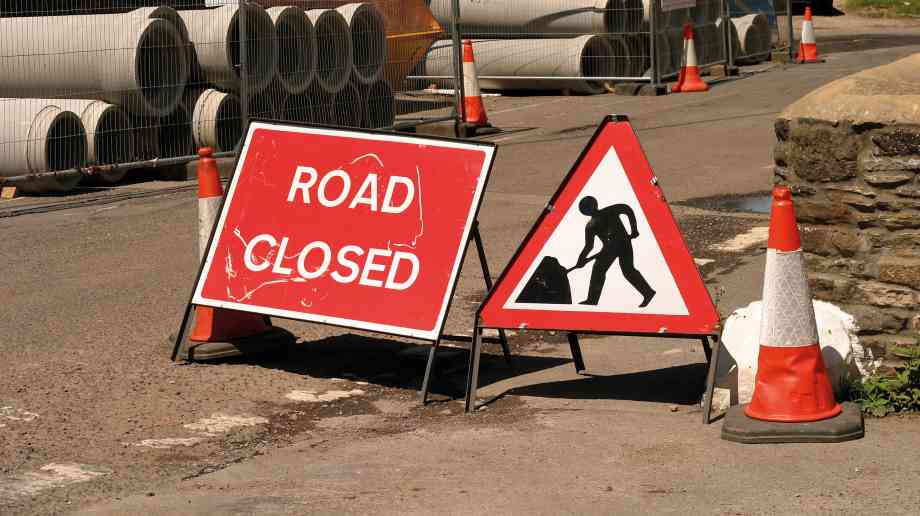Sue Robb of 4Children talks to Julie Laughton and Alison Britton from the Department for Education about the role of childminders in delivering the 30 hours free entitlement.

The challenges ahead for our local roads
Alan Mackenzie outlines the key findings from this year’s Asphalt Industry Alliance survey and why they clearly indicate that the battle to rescue our crumbling local roads network is being lost.
Every year the Asphalt Industry Alliance (AIA) carries out an independent survey of local authority highways departments in England and Wales. The aim of the survey is to build a picture of the general condition of local roads and the levels of funding required to keep them in reasonable condition.
Over the last two decades the enduring message from our Annual Local Authority Road Maintenance (ALARM) survey has been one of underfunding. Successive governments have failed to provide the resources required to properly maintain our local roads, and they are deteriorating at a faster rate than they can be repaired. This year’s survey shows once again that most local authorities don’t have enough money to keep pace with essential repairs, never mind tackle the backlog of carriageway maintenance. And, despite the government’s pledge to commit £6.1 billion for local roads maintenance over the next five years, the survey reveals that average local authority funding is down 16 per cent on last year.
The ALARM survey is widely respected throughout industry and local government. It reports the views of those directly involved in repairing and maintaining our roads and includes questions relating to funding, maintenance, pot holes and emergency repairs. This combination of quantitative and qualitative research, which is independently verified, provides valuable insight into the scale of the problem.
A fall in funding
Our local roads make up 98 per cent of the total road network. Nearly every journey starts or ends on a local road. To quote the Department for Transport (DfT), local roads ‘keep the population connected and the economy flowing’, so it’s not surprising that people care about how this national asset, worth over £400 billion, is looked after. In fact the RAC Foundation reported last year that tackling the condition of roads and pavements is seen by the public as the single most important transport priority.
And yet the 2016 ALARM survey shows that average local authority funding is down from £18.3 million to £16.2 million. The situation is compounded by the fact that a smaller proportion of budget is actually being spent on road maintenance, as funds are directed to other works such as new cycle paths.
The challenge faced by local authority highways teams to make ends meet is also reflected in the average annual shortfall per authority. This is the difference between the money they need to keep the carriageway in reasonable order and the amount they actually receive. ALARM 2016 reports a rise from £3.2 million in 2015 to £4.6 million.
Ten years ago, the ALARM survey 2006 warned that increasing shortfalls would result from putting off investment needed today until tomorrow. A decade on there is no joy in being proved right. The feedback received from highways engineers is that long‑term underfunding means that the local road network continues to deteriorate at a faster rate than it can be repaired, while the age of the network and the increased volume and weight of vehicles is accelerating that rate of decline.
Achieving more with less
The precarious position is underscored by the maintenance backlog figures. A decade ago highways departments estimated that the time needed to get their roads back into a reasonable condition would be 10 years. This year they told us 14 years. The cost to carry out that work has fallen by three per cent but remains way out of reach at £11.8 billion.
Despite the lack of money, there’s no doubt that local authorities are achieving ‘more with less’ as a result of improved efficiencies, better processes and a focused approach through the adoption of Highways Asset Management Plans (HAMPs). This allows maintenance work to be prioritised on key routes and roads in poor condition which might otherwise have to be closed.
But it also marks a move towards mediocrity. More of the network is ranked as ‘acceptable’, with between five and 15 years life remaining. This is concerning for the future and suggests a move towards ‘managed decline’. This situation is supported by figures showing that the average proportion of road maintenance budget spent on reactive maintenance, (ie work not planned at the beginning of the year) is remaining fairly constant.
There will always be unforeseen circumstances which create a need for reactive maintenance, but the better the condition, the less likely this need will be. With 98 per cent of local authorities reporting that they have a Highways Asset Management Plan in place, we were expecting this figure to fall. The fact that it didn’t reflects a shift towards route prioritisation when it comes to planned maintenance work.
Research shows that reactive work such as patching and filling potholes is 20 times more expensive per square metre than spending on planned preventative maintenance. Yet in 2016, £118.4 million was spent filling over 2.2 million potholes – one every 15 seconds.
Planned maintenance
Although the government has pledged £50 million for potholes, the money would be better spent on planned maintenance which would prevent the potholes forming in the first place. The Pothole Action Fund for England in 2016/17 might seem like good news but is, in fact, another clear sign that the battle to rescue our crumbling local roads network is being lost. It does nothing to address the cumulative effect of decades of underfunding and perpetuates the downward spiral of the ‘patch and mend’ approach.
The most efficient way to deal with the problem of our failing roads is to fix them properly and stop potholes forming in the first place. One way to address this would be to tackle the disparity in funding that exists between local roads and the strategic road network (SRN).
Although local roads carry two thirds of traffic, they receive a fraction of the funding allocated to the SRN. Local Government Association figures show that between 2015 and 2021 every mile of our motorways and trunk roads will receive £1.4 million funding while our local roads will see £31,000 per mile. Without a significant injection of funds, the resilience of the network will continue to be stretched and we face the real prospect of a local road network that will just not be fit for purpose in the coming years.
Further Information
www.asphaltuk.org
Company Focus
The Isuzu D-Max is a rugged workhorse that can fulfil a myriad of purposes as both a business and personal vehicle. Consequently, the D-Max is a particularly popular choice when it comes to farming, construction, and trade industries. Uncompromising in nature, the D-Max strives to be the ideal companion for many business needs.
Event Diary
UKREiiF has quickly become a must-attend in the industry calendar for Government departments and local authorities.
The multi-award-winning UK Construction Week (UKCW), is the UK’s biggest trade event for the built environment that connects the whole supply chain to be the catalyst for growth and positive change in the industry.
Supplier Profiles
Geo Energy
At GeoEnergy Design, we're on a mission to disrupt the traditional way heating and cooling ha
Latest Features
Professor Harith Alani, director of the Knowledge Management Institute at the Open University explains how AI can be used for good and bad.
Alex Lawrence, head of health & social care, techUK sets out techUK’s Five Point Plan for CareTech.












